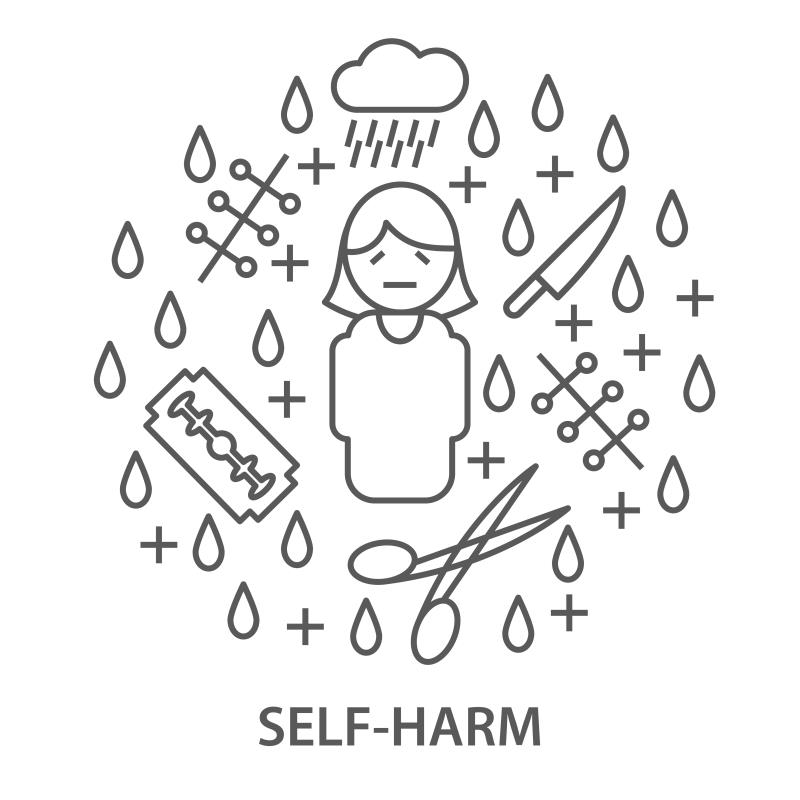
First-recorded diagnoses of psychiatric disorders are associated with increases in risk of subsequent self-harm that vary by diagnostic categories across gender and age groups, with the highest risk observed in patients with substance misuse or dependence, a 10-year case-control study in Hong Kong has shown.
All first-recorded diagnoses of psychiatric disorders of interest in the study (namely, substance misuse or dependence, personality disorders, alcohol misuse or dependence, depression, bipolar disorders, schizophrenia and anxiety disorder) were significantly associated with an increased risk of subsequent self-harm behaviour. Among these disorders, substance misuse or dependence was associated with the highest risk of subsequent self-harm (adjusted hazard ratio [aHR], 9.6; 95 percent confidence interval [CI], 8.4 to 11.0; p<0.0001), followed by personality disorders (aHR, 3.7; 95 percent CI, 2.8 to 4.9; p<0.0001), and alcohol misuse or dependence (aHR, 3.2; 95 percent CI, 2.9 to 3.7; p<0.0001). [Lancet Psychiatry 2020;7:135-147]
Significant increases in risk of self-harm were observed for all psychiatric disorder groups in both genders, except for male patients with bipolar disorders (aHR, 1.1; 95 percent CI, 0.8 to 1.6; p=0.45).
Compared with patients in other age groups, adolescent patients had the highest risk of self-harm following a diagnosis of personality disorders (aHR, 4.8; 95 percent CI, 2.6 to 8.8; p<0.0001), depression (aHR, 4.6; 95 percent CI, 3.4 to 6.3; p<0.0001) or schizophrenia (aHR, 1.8; 95 percent CI, 1.4 to 2.4; p<0.0001). In young and middle-aged adults, a diagnosis of bipolar disorders (aHR, 1.9; 95 percent CI, 1.4 to 2.7; p<0.0001) or alcohol misuse or dependence (aHR, 4.2; 95 percent CI, 3.4 to 5.2; p<0.0001) was associated with the highest risk of subsequent self-harm. The risks were generally low for the older age group across all psychiatric disorders.
The incidence of self-harm was the highest in the personality disorder group (3,174 cases per 100,000 patient-years) and the substance misuse or dependence group (3,018 cases per 100,000 patient-years), and lowest in the anxiety disorder group (676 cases per 100,000 patient-years).
In this nested case-control study using inpatient records retrieved from the Hong Kong Clinical Data Analysis and Reporting System of public hospitals, cases (n=86,353) were patients aged 10 years or older who had been admitted to inpatient care with a first-listed record of psychiatric disorder during the 10-year study period of 2000–2010. Matched controls (n=134,857) were from a subsample of all admitted individuals with no record of the psychiatric disorders of interest.
Depression (32.3 percent) was the most prevalent psychiatric disorder of study interest, with females (68.4 percent) and older people (aged ≥65 years) (30.9 percent) accounting for the highest proportions of patient groups across gender and age groups.
“The varying risk of self-harm according to patient gender, age, and diagnostic category is relevant not only to healthcare professionals, but also to policy makers and clinical guideline committees, to help in identifying the groups at heightened risk and provide efficient and targeted prevention strategies for such populations, even for people with no history of self-harm,” concluded the researchers.